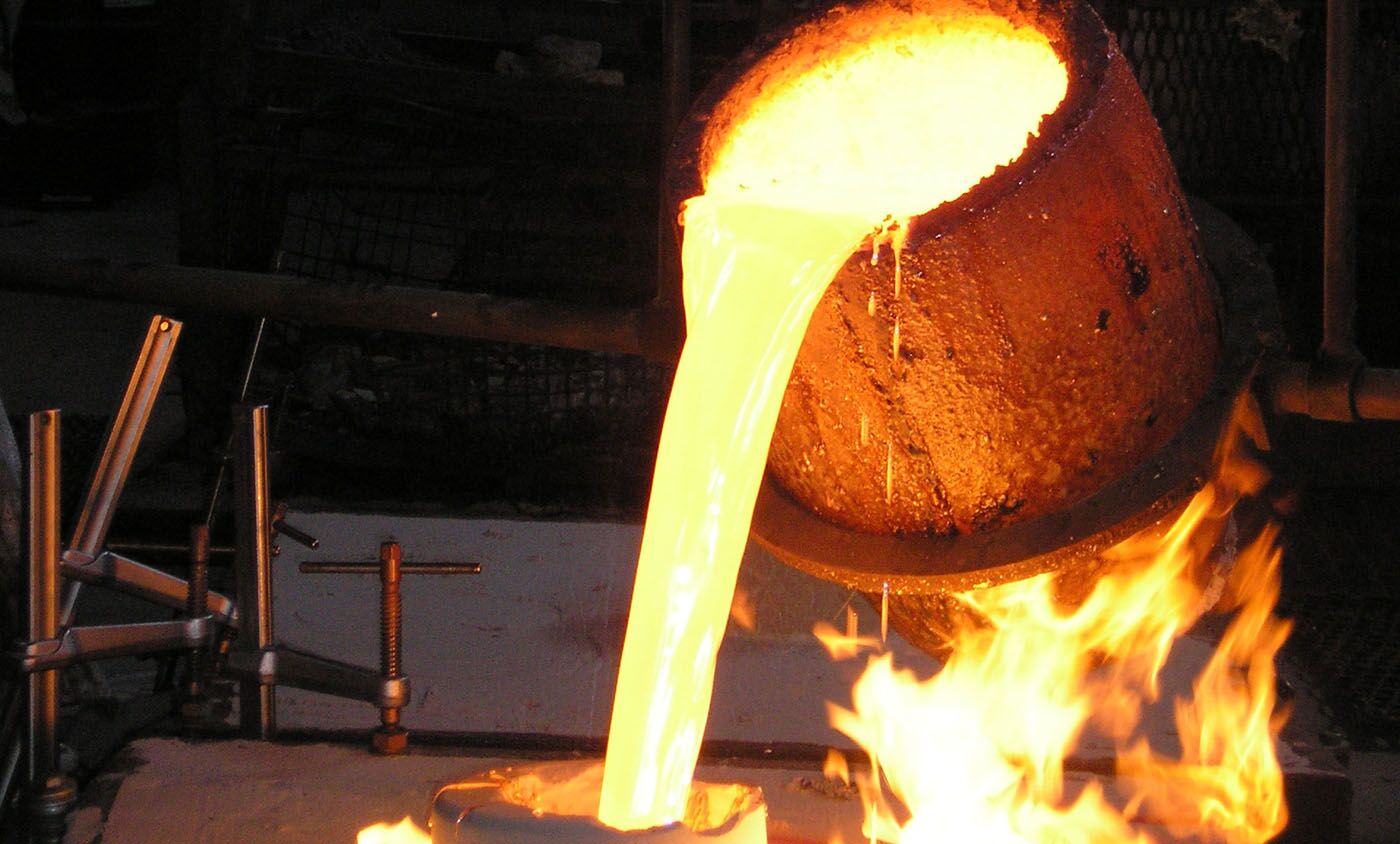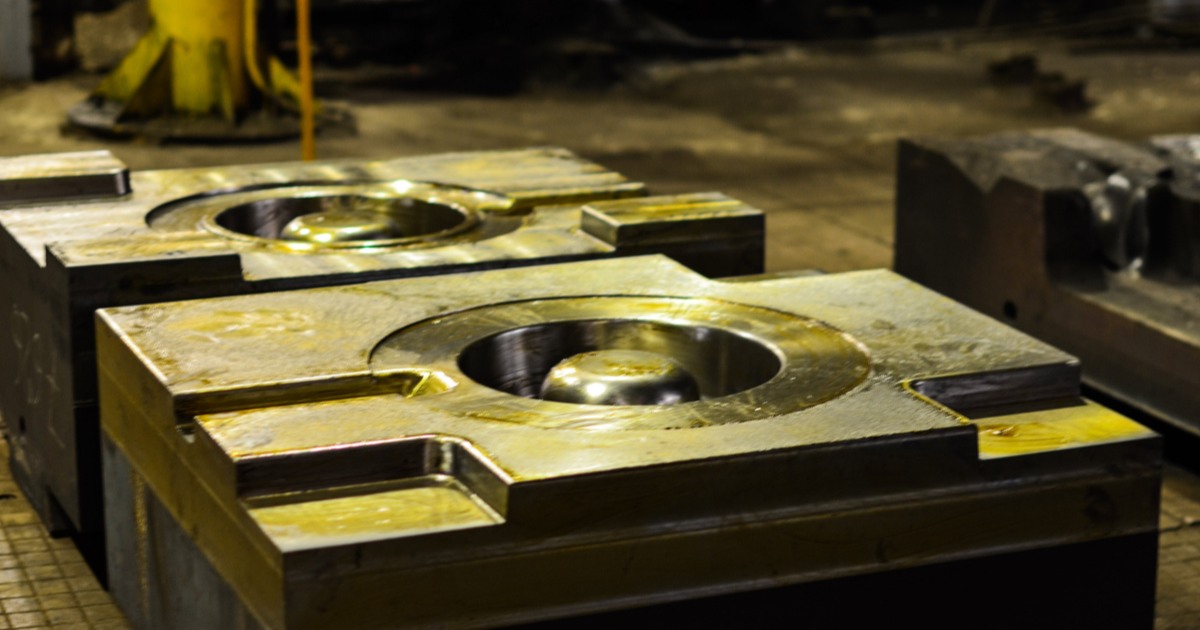Exploring the Vital Applications and Uses of Aluminum Factory in Modern Production
Aluminum shops play a vital role in contemporary production, serving diverse markets with their special residential properties. From vehicle components that boost fuel efficiency to aerospace frameworks that prioritize weight, aluminum's versatility appears. Its applications reach construction and consumer electronic devices, highlighting its resilience and energy performance. The developments in aluminum spreading methods and future fads warrant a closer evaluation, as they might redefine its effect on manufacturing.
The Function of Light Weight Aluminum Foundries in Automotive Manufacturing
As the automotive market significantly focuses on lightweight materials to boost fuel effectiveness and efficiency, light weight aluminum foundries have actually become essential factors to manufacturing processes. These shops specialize in producing elements that fulfill the stringent needs of contemporary cars, such as engine blocks, transmission housings, and architectural components. Light weight aluminum's beneficial homes-- such as high strength-to-weight proportion, rust resistance, and superb thermal conductivity-- make it a suitable option for automobile applications.
In addition, light weight aluminum shops use innovative spreading techniques, including die casting and sand spreading, to produce sturdy and complex components. This capacity permits makers to maximize styles for performance while decreasing weight. Making use of aluminum likewise supports sustainability objectives, as it is highly recyclable and decreases energy usage in lorries. By facilitating the assimilation of light weight aluminum into automotive layout, factories play a critical duty in forming the future of the vehicle market, promoting effectiveness and advancement throughout the board.
Aerospace Applications: Lightweight Solutions for Flight
Light weight aluminum factories play a substantial function in the aerospace industry, where the demand for lightweight materials is extremely important for enhancing gas efficiency and performance in aircraft. The special properties of aluminum, including its high strength-to-weight proportion and deterioration resistance, make it an optimal option for numerous aerospace components. These parts include structural components, engine casings, and landing equipment, which add to overall aircraft performance.
The use of light weight aluminum alloys, particularly those developed with advanced casting strategies, enables the production of intricate styles and complicated forms while minimizing weight. Additionally, light weight aluminum's recyclability straightens with the aerospace sector's sustainability objectives, minimizing environmental impact. With continuous improvements in aluminum foundry innovations, manufacturers can optimize manufacturing procedures, resulting in boosted efficiency and decreased prices. As the aerospace industry significantly focuses on developments that improve performance, aluminum factories will continue to be essential to developing lightweight options for modern flight.
Building and Building And Construction: Enhancing Architectural Integrity
In the building and building and construction sector, a substantial focus is positioned on enhancing structural stability through the usage of aluminum. Recognized for its high strength-to-weight proportion, light weight aluminum supplies longevity without endangering on weight, which is essential in modern building styles. Its resistance to corrosion additionally ensures durability, making it a perfect product for numerous structural components, consisting of beam of lights, structures, and cladding.
Light weight aluminum likewise facilitates ingenious layout possibilities, enabling designers and engineers to create aesthetically pleasing frameworks while preserving safety and security standards. The material's flexibility enables its application in both commercial and residential projects, from skyscrapers to bridges. Additionally, advancements in aluminum factory strategies have enhanced the accuracy of aluminum elements, ensuring they meet stringent building regulations. Generally, the assimilation of aluminum in building and construction not just boosts structural integrity yet additionally contributes to lasting building techniques, given its recyclability and energy-efficient manufacturing methods.
Customer Electronic Devices: The Surge of Aluminum in Innovation
In the domain name of customer electronic devices, light weight aluminum has actually acquired prestige as a result of its light-weight layout benefits and premium thermal conductivity. This shift not only enhances product transportability but also improves gadget performance by properly dissipating heat. As innovation remains to advance, the function of aluminum in producing smooth and reliable gadgets is significantly significant.
Lightweight Style Benefits
As consumer electronic devices progress, the need for light-weight yet long lasting products has actually surged, making light weight aluminum an increasingly popular option among suppliers. Its reduced density permits the production of sleek gadgets that are easy to lug and make use of, significantly boosting mobility. The strength-to-weight proportion of light weight aluminum guarantees that items can withstand day-to-day damage without compromising performance. Furthermore, the pliability of light weight aluminum enables suppliers to design complex shapes and forms, further adding to innovative visual appeals and capability. This lightweight feature also plays an essential duty in power performance, as lighter tools require much less power to run. Because of this, aluminum not just fulfills the evolving aesthetic demands however additionally lines up with the contemporary concentrate on sustainability in consumer electronics.
Thermal Conductivity Advantages
Thermal conductivity is a critical element in the performance of consumer electronics, and light weight aluminum excels in this domain. Its high thermal conductivity permits effective warm dissipation, which is important for preserving optimal operating temperatures in gadgets such as smart devices, laptops, and gaming consoles. By helping with rapid heat move away from delicate elements, aluminum aids prevent getting too hot, therefore improving efficiency and extending tool long life. The light-weight nature of aluminum complements its thermal residential or commercial properties, making it an excellent option for portable innovation. As manufacturers significantly prioritize performance and power effectiveness, light weight aluminum's function in thermal monitoring ends up being a lot more considerable, leading to its expanding adoption in modern digital styles. This trend emphasizes aluminum's relevance in customer electronic devices development.
Marine Sector: Rust Resistance in Harsh Atmospheres
Corrosion resistance is an important factor in the marine industry, where tools and structures are regularly revealed to harsh saltwater atmospheres. Aluminum, especially in its alloy forms, uses significant advantages in this respect. Its all-natural oxide layer supplies a safety obstacle that avoids rust, making it ideal for vessels, docks, and various other marine applications.
Marine-grade light weight aluminum alloys, such as 5083 and 6061, are particularly created to stand up to the corrosive impacts of deep sea and weather. These alloys not only stand up to corrosion but additionally maintain structural integrity and stamina gradually. Applications vary from hulls and superstructures of ships to parts in offshore platforms.
The lightweight nature of aluminum additional improves its viability, enabling improved gas effectiveness and ease of handling - Casting Foundry. As the marine industry remains to concentrate on resilience and efficiency, aluminum stays a necessary product selection for withstanding corrosion sought after marine settings
Technologies in Aluminum Spreading Techniques
While traditional aluminum casting techniques have served the market well, recent advancements are transforming the landscape of aluminum manufacturing. Techniques such as 3D he said printing of cores and mold and mildews are gaining traction, enabling rapid prototyping and lowered lead times. This improvement enables manufacturers to create complicated geometries that were previously challenging to attain with standard casting approaches. Furthermore, developments in die-casting innovation, consisting of using high-pressure die-casting (HPDC), have actually enhanced the accuracy and surface coating of cast aluminum components, leading to top article improved performance in different applications.
The adoption of investment spreading has permitted for higher design liberty and lowered material waste. Developments in alloy structures are also substantial, as they enhance mechanical buildings and rust resistance. Overall, these growths not just enhance manufacturing procedures however likewise add to even more lasting methods within the light weight aluminum foundry industry, making it versatile to the developing needs of contemporary manufacturing
Future Patterns in Light Weight Aluminum Foundry Production
The future of aluminum foundry manufacturing is poised for substantial transformation with automation, boosting effectiveness and accuracy in producing processes. Lasting practices are significantly ending up being a priority, as shops seek to lessen their environmental impact while satisfying growing regulatory needs. In addition, developments in alloy growth will enable the production of more powerful, lighter products customized for varied applications, driving innovation in the industry.
Automation in Foundry Processes

Sustainable Manufacturing Practices
An expanding focus on lasting manufacturing methods is reshaping the future of aluminum shop manufacturing. Market leaders are significantly adopting energy-efficient modern technologies and reusing initiatives to minimize waste and lower carbon impacts. The use of recycled light weight aluminum substantially lowers energy intake contrasted to key light weight aluminum manufacturing, making it a recommended selection for ecologically mindful makers. In enhancement, cutting-edge spreading strategies are being established to boost product effectiveness and decrease emissions. Firms are also spending in sustainable power sources, such as my response solar and wind, to power their operations sustainably. aluminum metal casting. By incorporating these practices, the light weight aluminum foundry sector not just meets governing requirements but additionally responds to customer need for greener items, ultimately leading the way for a much more sustainable production landscape
Advanced Alloy Advancement
Developments in light weight aluminum alloy advancement are readied to play a substantial duty in the future of factory production, specifically as sustainability and performance demands intensify. The market is progressively concentrating on creating high-strength, lightweight alloys that can hold up against severe conditions while minimizing environmental effect. Scientists are exploring innovative structures, such as aluminum-lithium and aluminum-scandium alloys, which promise boosted mechanical properties and minimized weight. Furthermore, the combination of innovative production strategies, including additive production and accuracy casting, allows for even more complex geometries and decreased product waste. As governing stress and customer preferences shift towards greener options, the advancement of recyclable and energy-efficient alloys will be essential. The future landscape of light weight aluminum shop production rests on these improvements in alloy innovation.

Regularly Asked Questions
What Are the Ecological Influences of Light Weight Aluminum Foundry Procedures?
Light weight aluminum factory procedures can result in significant ecological impacts, consisting of greenhouse gas exhausts, power usage, and waste generation. In addition, incorrect management of toxins might bring about dirt and water contamination, affecting neighborhood ecosystems and communities.
Exactly How Does Aluminum Recycling Affect Factory Processes?
Light weight aluminum reusing boosts shop processes by offering an affordable basic material, lowering energy usage and discharges. This sustainable method increases efficiency, decreases waste, and sustains the circular economic climate, profiting both makers and the atmosphere.
What Precaution Are Applied in Aluminum Foundries?
Aluminum foundries carry out different precaution, consisting of personal safety equipment, proper ventilation systems, regular security training, fire prevention protocols, and equipment maintenance treatments to reduce hazards and assure a secure functioning environment for all employees.
Exactly How Do Foundries Make Sure Quality Assurance in Aluminum Casting?
Shops guarantee top quality control in light weight aluminum casting with extensive product assessments, exact temperature level tracking, standard treatments, and regular screening of actors products. These procedures aid maintain uniformity, minimize problems, and satisfy market requirements effectively.
What Are the Price Factors in Aluminum Shop Manufacturing?
Cost consider aluminum foundry manufacturing consist of basic material costs, power usage, labor expenses, equipment upkeep, and overhead expenditures. In addition, production quantity and complexity of layouts substantially affect total production expenses and profitability.
As the automotive market increasingly focuses on lightweight materials to boost fuel efficiency and efficiency, light weight aluminum shops have ended up being important contributors to manufacturing processes. Light weight aluminum foundries play a substantial duty in the aerospace sector, where the demand for light-weight materials is extremely important for enhancing gas efficiency and performance in airplane. Additionally, innovations in light weight aluminum shop strategies have enhanced the accuracy of light weight aluminum parts, ensuring they meet rigid building codes. While typical aluminum spreading approaches have actually offered the sector well, recent technologies are transforming the landscape of aluminum manufacturing. The use of recycled aluminum significantly reduces power intake contrasted to primary light weight aluminum manufacturing, making it a recommended choice for ecologically mindful producers.